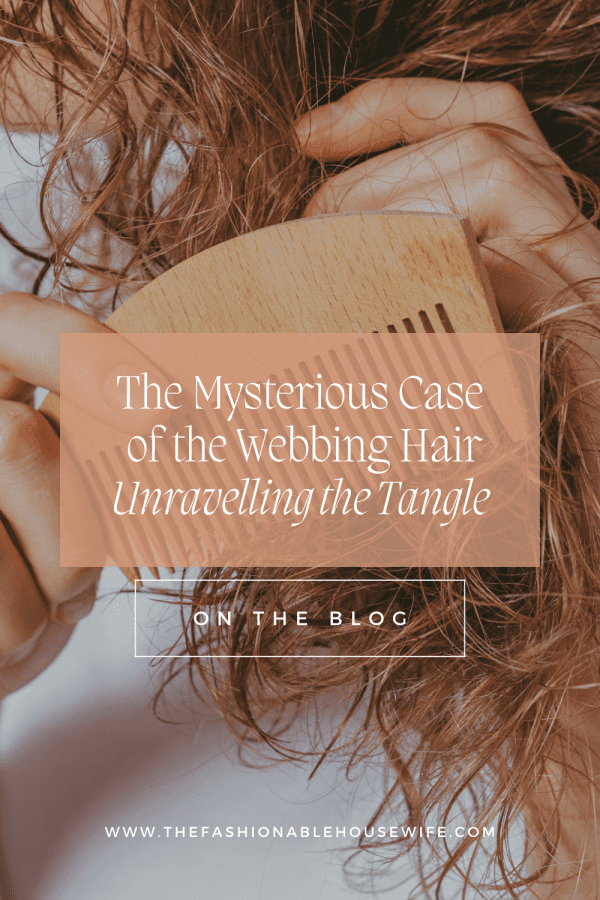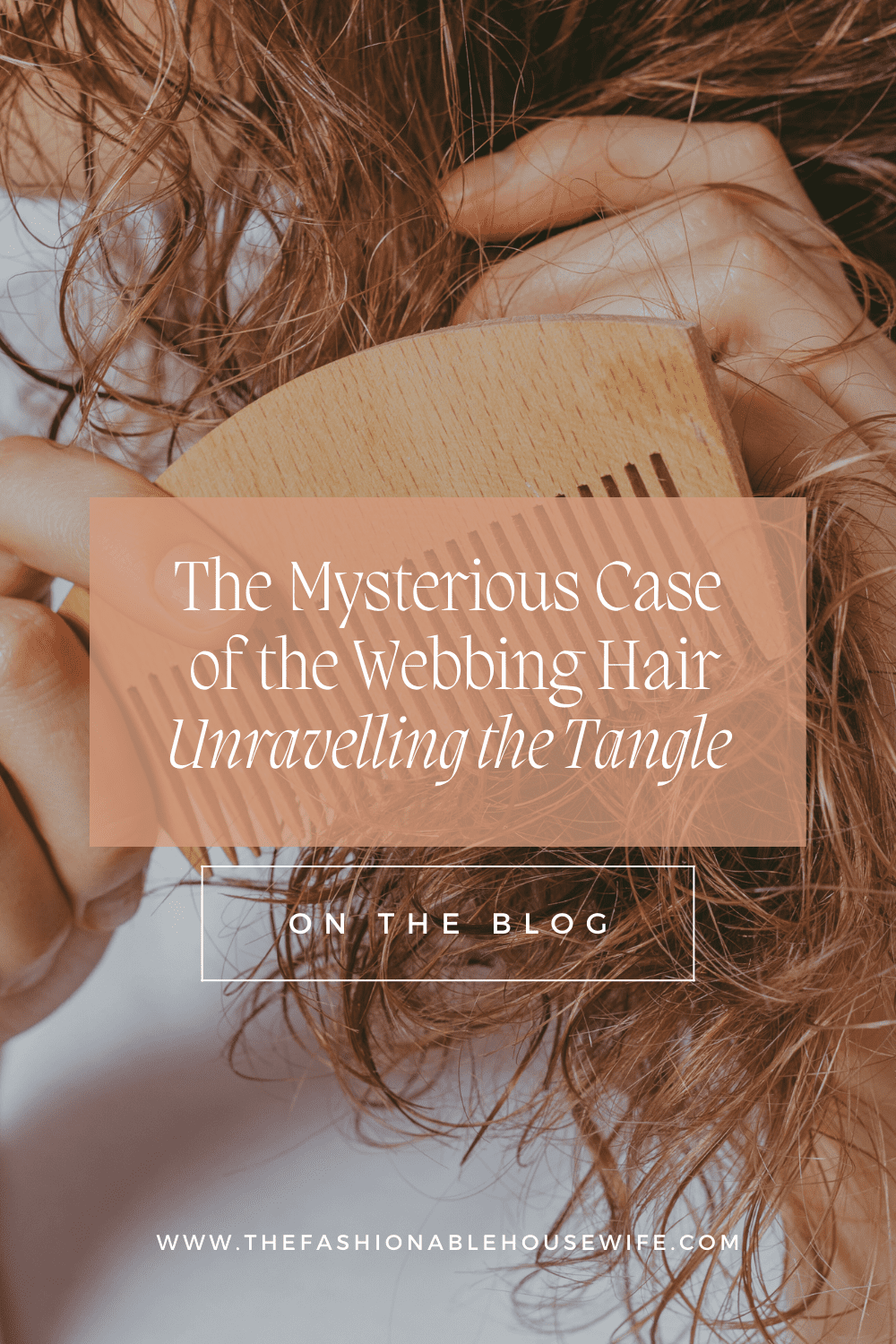The Mysterious Case of the Webbing Hair: Unravelling the Tangle

As a beauty enthusiast and ex-hairstylist, I’m always on the lookout for ways to improve my hair care routine. During my time behind the chair, I encountered many clients with hair webbing. In this article, we look at what hair webbing is, and how we can tackle it.
What in the World is Hair Webbing?
Hair webbing, also known as hair casts, is a condition characterized by thin, white, cylindrical sheaths that encircle the hair shaft. These sheaths, often mistaken for dandruff or product buildup, are actually made of keratin, the same protein that makes up our hair and nails. They can be quite frustrating to deal with, as they make the hair feel rough, tangled, and difficult to manage. I’ve personally experienced this, and it’s definitely not a pleasant feeling!
Those pesky webs can cling on to the hair quite stubbornly, making them difficult to remove with regular brushing or shampooing. They can affect anyone, regardless of hair type or texture. However, those with fine or damaged hair might be more susceptible. Understanding the root cause of this issue is the first step towards effective prevention.
Is My Hair Type Prone to Webbing? Decoding the Susceptibility Factors
Several factors can contribute to the formation of hair webbing. One of the primary culprits is product buildup. Using excessive amounts of styling products, such as gels, mousses, and hairsprays, can create a breeding ground for these keratinous sheaths. I’ve learned to be more mindful of the amount of product I use and to prioritize clarifying shampoos in my routine.
I always suggest that people stick to one or two hair products at a time, to prevent build up and greasiness. I always suggest that if you’ve had product in your hair for a long time, wash your hair and let it breath for a few days. Feel free to cover your hair with a realistic wig or get extensions if need be.
Additionally, dryness plays a significant role. When the hair lacks moisture, the cuticle (the outermost layer of the hair shaft) becomes rough and raised, making it easier for the keratin sheaths to form. This is why regular deep conditioning treatments are crucial, especially during the colder months. Certain medical conditions, such as trichorrhexis nodosa (a condition that causes weak points in the hair shaft), can also increase the likelihood of hair webbing. Consulting a dermatologist is always recommended if you suspect an underlying medical issue.
Banishing the Webs: My Tried-and-True Prevention Strategies
Now that we understand the causes of hair webbing, let’s explore some effective prevention strategies. Looking at products, I’ve found that incorporating a clarifying shampoo into my weekly routine works wonders. It helps remove excess product buildup and keeps my scalp clean and healthy. I personally prefer sulfate-free options to avoid stripping my hair of its natural oils.
Next, regular deep conditioning is a must. I aim to treat my hair to a deep conditioning mask at least once a week. This helps replenish moisture, smooth the cuticle, and prevent the formation of those pesky webs. I also find that using a wide-tooth comb instead of a brush helps minimize breakage and prevents the webs from getting tangled. This simple switch has made a noticeable difference in the overall health and manageability of my hair.
The Power of Natural Remedies: Exploring Gentle Solutions
Beyond conventional hair care products, I’ve also explored some natural remedies for preventing hair webbing. Apple cider vinegar rinses, for instance, can help balance the pH of the scalp and remove product buildup. I dilute apple cider vinegar with water and use it as a final rinse after shampooing. It leaves my hair feeling incredibly clean and shiny.
Another natural remedy I swear by is aloe vera gel. Its moisturizing and soothing properties work wonders for dry, damaged hair. I apply fresh aloe vera gel directly to my scalp and hair, leave it on for about 30 minutes, and then rinse it out. It’s a simple yet effective way to keep my hair hydrated and prevent webbing. These natural solutions, combined with a consistent hair care routine, have significantly improved the health and appearance of my hair.
Seeking Professional Help: When to Consult an Expert
While these prevention strategies are generally effective, it’s important to consult a dermatologist or trichologist if you experience persistent or severe hair webbing. They can help determine the underlying cause and recommend appropriate treatment options. Sometimes, hair webbing can be a symptom of a more serious underlying condition, so it’s always best to seek professional advice when needed. Remember, taking care of our hair is an essential part of self-care, and seeking professional help when necessary is a sign of strength, not weakness.

